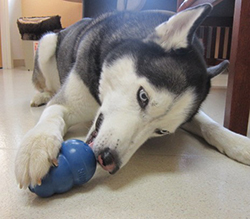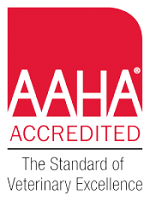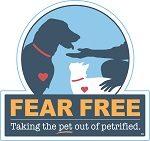
 In our last blog post, we told you about our team’s efforts to reduce stress and fear for your pets when they visit our veterinary clinic. We have made changes that can be helpful for many pets like various food distractions, calming pheromones, and different handling techniques to reduce stress and make the veterinary clinic a more pleasant place.
In our last blog post, we told you about our team’s efforts to reduce stress and fear for your pets when they visit our veterinary clinic. We have made changes that can be helpful for many pets like various food distractions, calming pheromones, and different handling techniques to reduce stress and make the veterinary clinic a more pleasant place.
To be more successful with this effort, we need your help. There are lots of things that you, the pet owner, can do at home to prepare your pet for a veterinary visit. In the next couple of blog posts, we will address different things that may stress your pet and what you can do to reduce that stress.
- Bringing your pet to appointments hungry can be a big help. Don’t feed dinner or breakfast until after your appointment to make sure your pet is as food motivated as possible when here. If your pet has a favorite toy, it can be helpful to bring it along.
- When you arrive at our clinic, make sure to grab a pheromone (adaptil) sprayed bandana for your dog to help reduce anxiety. You will see a stocked display, as you come in the door. There are also feline pheromone (feliway) sprayed towels to put over cat carriers.
- For dogs, there are training techniques that can be done in advance to prepare your dog for things that may be unfamiliar and therefore scary to them. Nail trims, intranasal vaccines (Bordetella), blood draws and examination of the ears and mouth are common stressors. Dogs do not understand what we are doing and these are not things anyone typically does to them at home. Simulating these procedures ahead of time, with lots of treats and praise, when they are calm and comfortable, can go a long way in reducing their stress during an exam.
These techniques are similar to methods you likely used to teach your dog to “sit”, “give paw”, “beg”, or “rollover”. Basically, you are using treats and rewards to teach your dog to accept something that we may be doing at a veterinary visit. For instance, if your dog gets the nasal Bordetella vaccine for grooming or doggy day care, using treats and rewards to train your dog the “trick” of having his/her snout held while touching something to a nostril can make the process more “normal” when we do it in clinic. It’s always best to start slowly and use a lot of repetition, rewards and praise. Start slowly and only do what your dog is comfortable with at first (maybe putting your hand lightly on your dog’s snout) and over time advancing to holding the snout more firmly, and finally touching something to your dog’s nostril at the same time. Give plenty of high value, tasty treats every time your dog accepts another step. Practice this daily or several times a week until your dog is completely comfortable. This same technique can be used for ear cleaning, nail trimming and other procedures. Check out our Facebook page for videos that show some of these training sessions in action!
In our next blog post, we will talk about training your cat to love (or at least not hate) it’s carrier. Cats can be a little more of a challenge, but we have some tips that can help. Stay tuned!




